Page 31
Nature
TCHI Magazine #4: Lost Connection
Lost Connection
We are suffering from a contemporary paradox: never before were we so technically connected, yet never before did we feel so disconnected from ourselves. Research shows that depression rates, stress levels and feelings of being completely out of touch with our own lives have never been so high and are all directly linked to our screen time. The answer to this problem comes in the form of another paradox: to reconnect we need to disconnect. And the best way to do that, is to soak up some good ol’ nature.
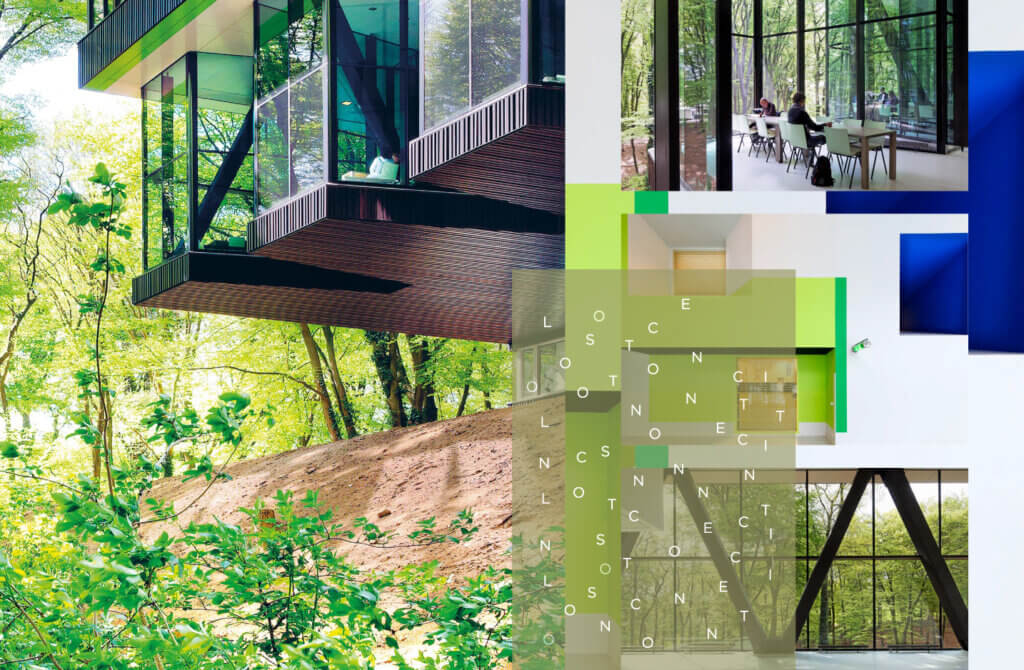
Photography: Rene de Wit
From the Alps for asthmatic patients to the Dead Sea for skin conditions, physical malaise has been treated with nature for centuries. However, most of the healing properties of nature have been replaced by medicine offered by the pharmaceutical industries. And with this reliance on pharmaceuticals, we lost a valuable connection to nature. But modern ailments resulting from our addiction to our devices, have rekindled an appreciation for nature and what it can do for the body and, even more so, the mind. Because nature as a backdrop to mental and physical restoration can literally put things into perspective.
In Scotland, for example, doctors can now officially recommend patients suffering from depression and anxiety-related issues, to touch the sea, take a dog for a walk or bury their face in the grass. Norwegian child psychologist Maren Østvold Lindheim helps children overcome traumas by simply sitting in the grass with them or by taking them fishing. However, not all patients can spend extended time outside. The good news is, you don’t have to lose yourself in the woods or trek to the ocean. A simple view or even the sounds of nature have a tremendous and positive impact on our health.
Therefore Lindheim, Oslo University Hospital and the Friluftssykehuset Foundation built a part of the hospital in the woods, resembling a cabin or treehouse. While it has all the hospital facilities inside, the outside experience and sensation of nature permeate the entire space. Similarly, the Dutch Rehabilitation Centre Groot Klimmendaal is set amongst trees and built so that patients always have a view of the woods. The scenic premises, which you can see in the imagery, is a striking design by Koen van Velsen Architecture.
More and more hospitals, learning environments and big companies are embracing the benefits of biophilic design. Amazon famously brought the forest into its headquarters with The Spheres Building. Their employees can work from ‘tree houses’, relax in ‘birds nests’ and enjoy a sense of nature. Stress levels go down, productivity and joy go up.
So, if you’re feeling the burden of your connectedness, put down that phone, step away from our buzzing society and find a tree to hug. You’ll feel a lot better.
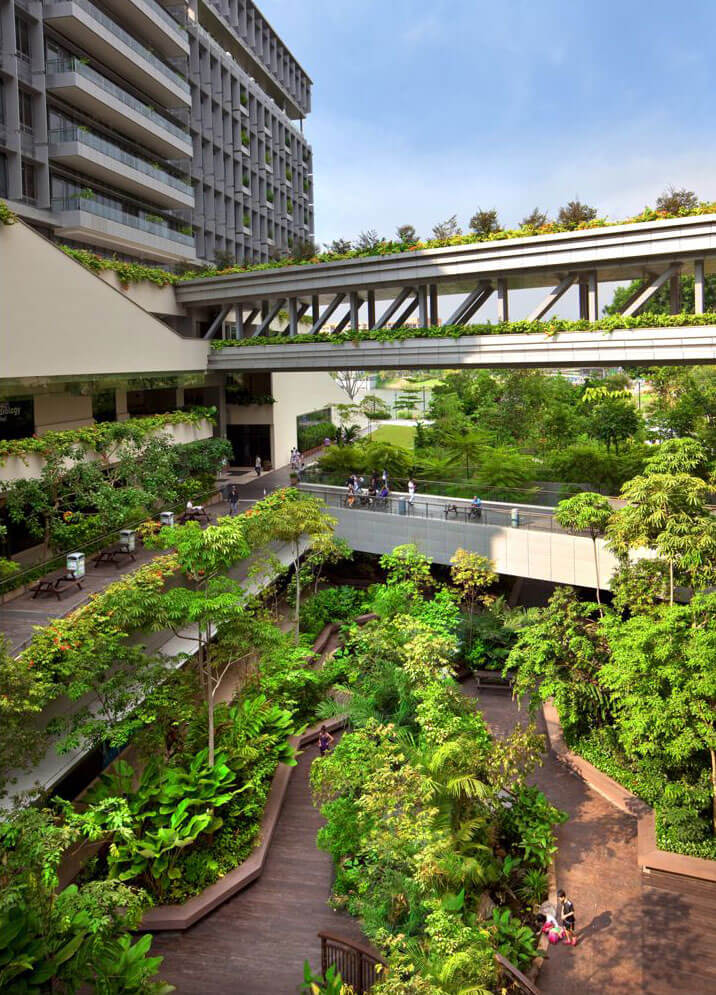
Khoo Teck Puat Hospital – Singapore
Image source:
Instagram @greenleavesandlandscape
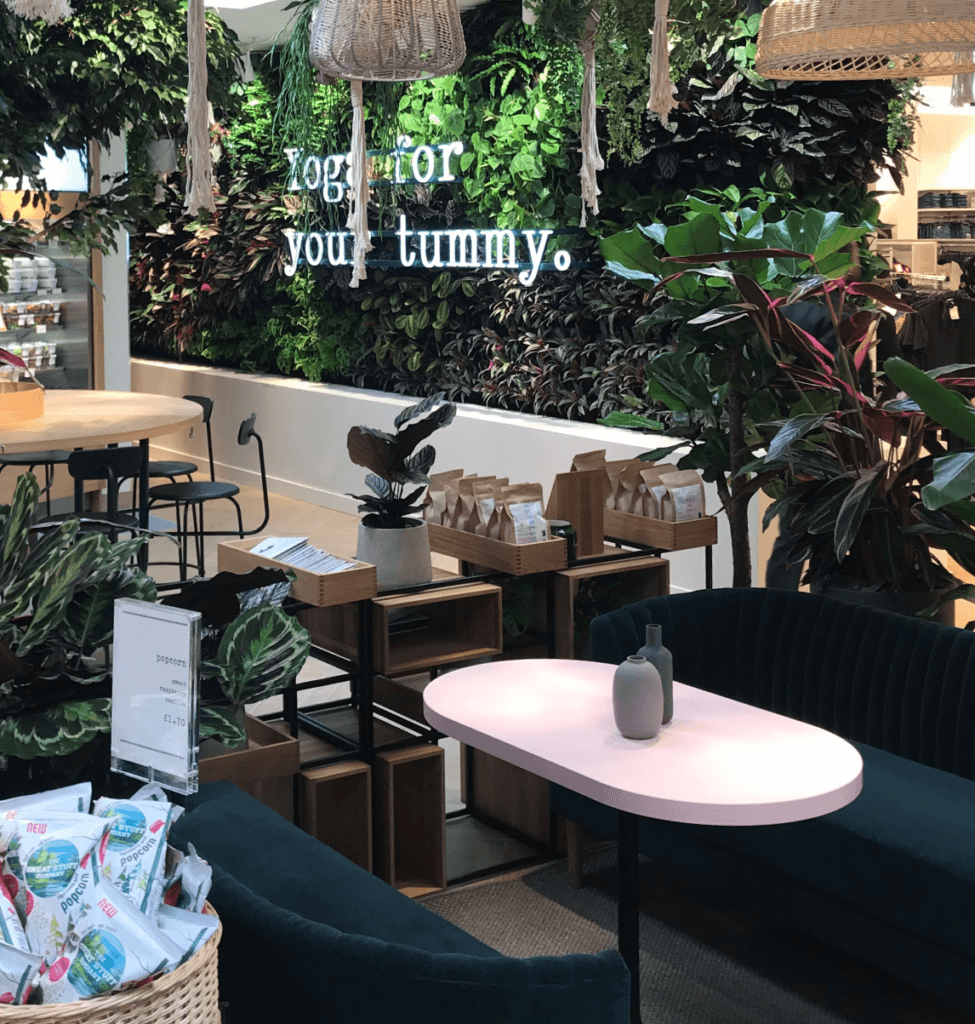
Living walls at store deli of the H&M Westfield – London
Image source:
Scotscape.co.uk
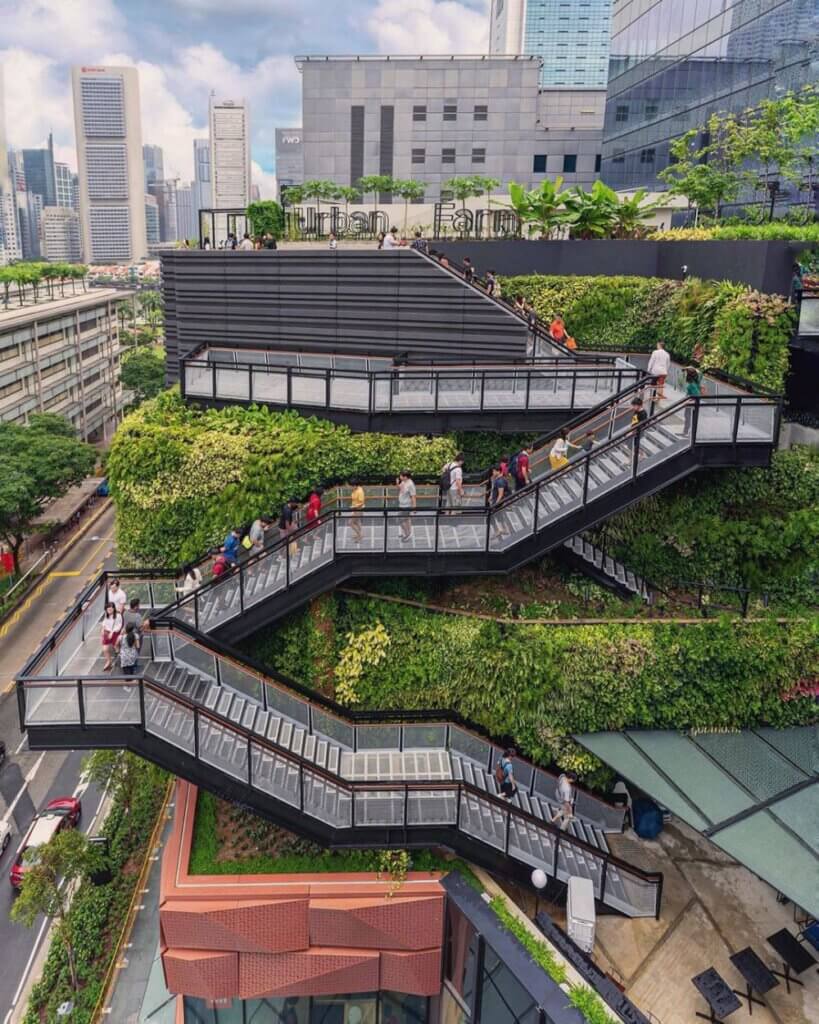
Stairway to urban rooftop farm – Funan Mall, Singapore
Image source:
Capitaland.com
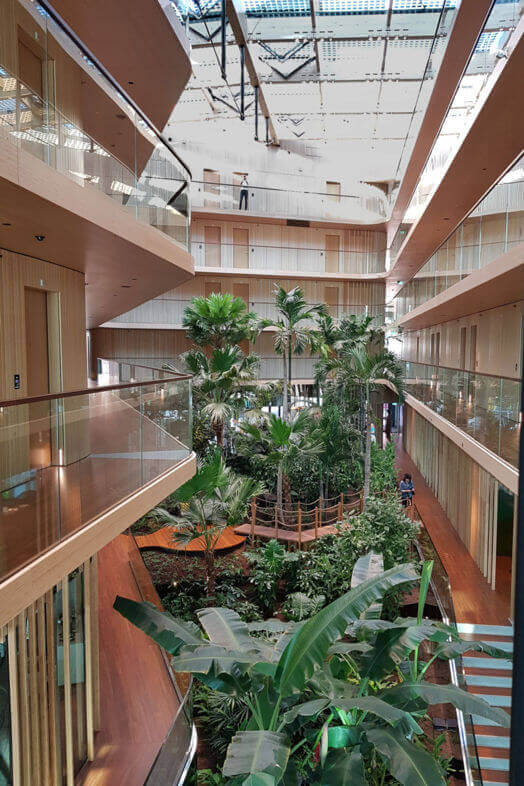
A hotel with a tropical atrium – Hotel Jakarta, Amsterdam
Image source:
pietersbouwtechniek.nl
Do you know some examples of biophilic design? Let us know!